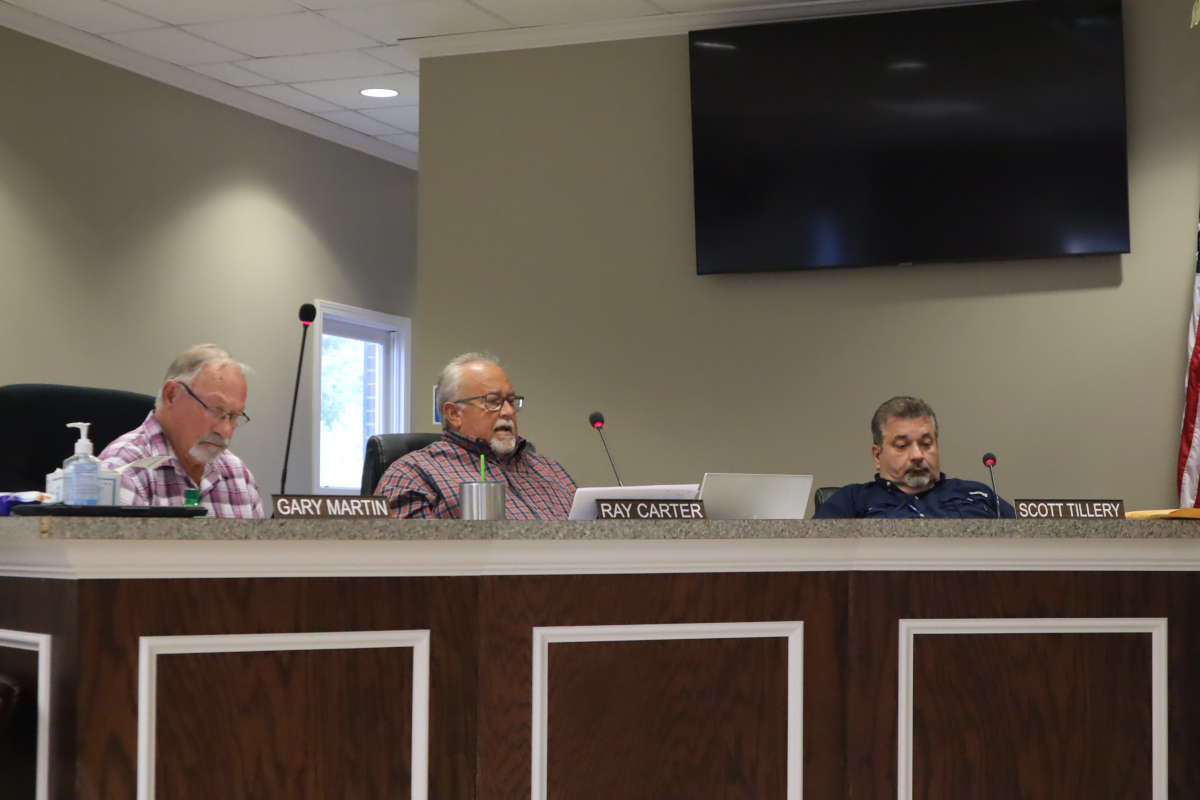Goal is to cap height of the Grady Road Landfill at current levels
The Polk County Commission approved the first step in the process of trying to keep the Grady Road Landfill from growing any taller than its current height.
But buyer beware: they are seeking to cap the amount to what’s left on the permit, but could before it fills up decide to seek a modification to allow for more trash.
Commissioners approved the plan 4-1, the lone vote against being Scotty Tillery, to proceed with a project to cap the height of the Grady Road Landfill – aka Mount Trashmore – in cooperation with landfill operator GFL Environmental as part of a settlement agreement made between the two parties to end a lawsuit filed several years ago.
That project will seek to use between 70 and 80 acres of land on a 215 acre plot west of the current 120 acre landfill site at Grady Road and Highway 278, and spread what’s left of the permitted amount of waste for the regional facility to move horizontally.
Commissioners had plenty of questions about the plan for County Manager Matt Denton. Among those was Commissioner Ray Carter, who pointedly wanted to know about whether additional waste could be added atop the horizontal move, instead of allowing the landfill to grow by another 180 feet vertically over the coming years.
“If we’re permitted 100 million tons today, and I don’t know the number. But if it is 100 million tons today, and we submit the permit, the permit will still be 100 million tons for the landfill in total?” Carter asked.
Denton said that was his understanding. Carter pressed further in the discussion.
“So we’re clear, it takes this volume from up here (cell 14) and moves it down here (the proposed horizontal move)?” he asked again.
Denton agreed.
“That’s the plan. And if we proceed here, do we have a written agreement with GFL over these terms we’ve discussed here? That’s not what I’ve seen,” Carter pressed.
Denton said he had discussed it with County Attorney Brad McFall, and that would be the next step. No move would be taken without the signatures of both parties, was also Denton’s understanding when pressed.
Commissioner Scotty Tillery questioned what the existing footprint is, currently at 120 acres, and noted too the 215 acres being sought for use for the move outward.
WATCH: County Commission discussion and vote on potential change to landfill footprint

GFL hasn’t provided a full design for how much of that property will be needed for the horizontal expansion. The plan, per discussion at the commission meeting on Tuesday evening, is to use between 70 and 80 acres of that westward property to allow for expansion.
Polk Today sought answers to questions about the project, but haven’t yet received a response from the company.
The landfill as it stands will have another 14 1/2 years of waste left to pack in, per what commissioners have reported. That’s six additional years of life expectancy lost in the past five, when estimates during the landfill lawsuit discussions put the figure at 26 years left of space. Some of that is contributed to a six-inch soil layer required daily before that suit was settled. Now the layer is scraped off daily, and put back on in the evening before operations end for the day.
The biggest contributor is likely, but not officially stated by GFL, is population growth regionally. Counties in the Metro Atlanta area utilize Polk County’s landfill for dumping their waste as a regional landfill. One Commissioner foresaw the problem, and now wants the county to think harder about the future.
“This all somewhat started 3 years ago when the waste was being tipped on top of the current hill and everyone saw the increasing of Mount Trashmore, and it was a negative thing that everyone was commenting about,” Commission Chair Hal Floyd noted. “Discussion started about going horizontally, keep from going higher.”
Floyd asked three years ago for the county to start setting aside monthly $30,000 savings from landfill fees paid to the county to work on the future solution, but that hasn’t happened. He pointed out more than $9 million could be in the bank for future commissioners to use to figure out post-closure and land purchases for a new facility, but instead they’d only have around $5 million if they started now.
The vote on Tuesday was only a first step. The County Commission will get to look at the plan in full via Planning and Zoning approval requirements for rezoning the land, and then approval will be required by the state Environmental Protection Division for a modification of the current plan for the landfill as well.
That will require additional public hearings along the way, giving the public the opportunity to comment.
While the goal will be to cap any future growth of the Grady Road Landfill, as stated in a release from the county below, it doesn’t mean that couldn’t happen in the future.

The County and GFL could at any time work together toward seeking another modification order in the future should the landfill continue to lose airspace at the current rate.
That would require both parties to come back together to submit a whole new plan to commissioners and the state EPD to determine whether any further expansion would be allowed.
It is worth noting the county is required to call the move an expansion when advertising the proposed zoning change to the public, but that they are adamant it is only a shift.
Either way, it will be at least a year before GFL could get started on a new cell at the landfill to shift trash outward instead of upward. Until then, the plan is to continue to fill the space already being utilized. Until the state EPD gives final approval of the plan, the Grady Road Landfill will continue to grow vertically.
County officials did note that any airspace used until the plan is approved will count against the space that can be filled in the westward shift of the landfill, if approved.




















Leave a Reply